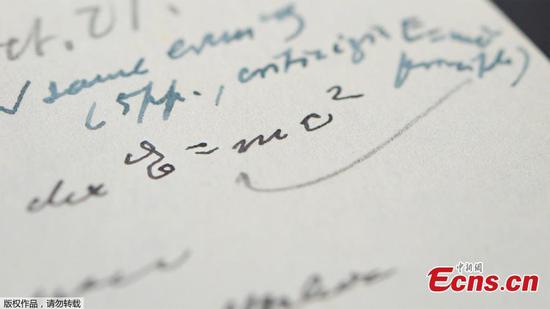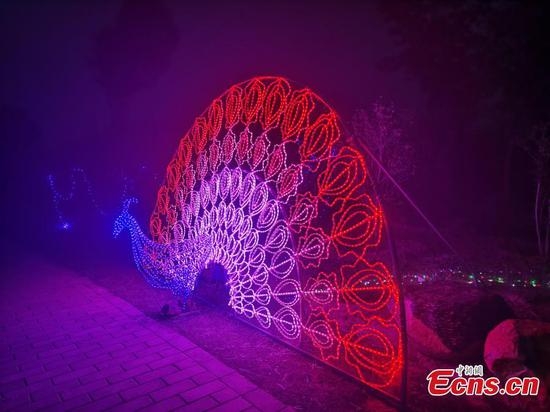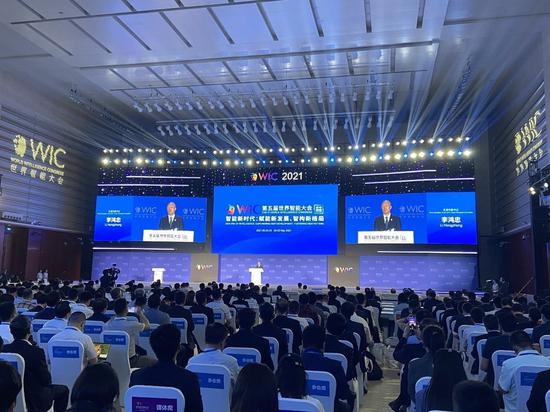The creation of a single-chromsome yeast, the first international entanglement-based quantum key distribution at the 1,000-km level, brain-like chips, research on ultrahigh-energy cosmic rays ...
China has witnessed fast development in basic research fields in recent years, reflecting the success of efforts to build the foundations for a homegrown innovation environment.
The primary role of basic research in driving productivity and development has been repeatedly highlighted.
In 2016, the Chinese leadership set the target for China to become one of the most innovative countries by 2020 and a leading innovator by 2030, as well as become a leading global S&T power by the 100th anniversary of the founding of the People's Republic of China in 2049.
The call was made at an event combining the national conference on S&T innovation, the biennial conferences of the Chinese Academy of Sciences and Chinese Academy of Engineering and the national congress of the China Association for Science and Technology.
At the event, Chinese researchers were encouraged to challenge the forefront of scientific problems, put forward more original theories, make more original discoveries, strive to realize leaping development in key areas of science and technology, keep up with new directions and even lead the world science and technology development.
In January 2018, the State Council issued a guideline on improving basic research, identifying 20 central tasks to advance basic science research.
At a symposium attended by scientists last September, Chinese leadership called for persistence in strengthening basic research by providing more resources and policies to create a favorable atmosphere.
At the 2019 ceremony to honor distinguished scientists, engineers and research, the government said basic research should have higher priority and receive more long-term and stable support.
China has deployed and built a number of major science and technology infrastructures, such as the Five-hundred-meter Aperture Spherical Radio Telescope (FAST) and the Spallation Neutron Source.
The country has issued a plan to set up 13 national applied mathematics centers in cities such as Beijing and Shanghai. Several basic research projects have been deployed in key areas such as quantum science, stem cells, synthetic biology and nanotechnology.
Through government support and coordination of enterprises and social entities, China has substantially increased funding for basic research. Its investment in basic research increased from 71.6 billion yuan (about 10.8 billion U.S. dollars) in 2015 to 133.56 billion yuan in 2019, with an average annual growth rate of 16.9 percent, much higher than that of the spending on research and development (R&D).
In 2019, the spending on basic research accounted for six percent of the total R&D spending, a record high.
According to the 14th Five-Year Plan (2021-2025) for National Economic and Social Development and the Long-Range Objectives Through the Year 2035, China will invest more in basic research over the next five years, with such funding expected to reach over 8 percent of all R&D expenditure.
Enterprises also embrace the importance of basic research. Tech giant Tencent has launched the Xplorer Prize to engage more in basic science and cutting-edge technology research.
Pony Ma, chairman of Tencent, said he hopes to see more enterprises and social capital investing in basic research.
Xue Qikun, an academician at the Chinese Academy of Sciences, was awarded the 2019 State Natural Science Award for pioneering contributions to the quantum anomalous Hall effect, a discovery that will help accelerate the development of low-power consumption electronics.
"China's basic research is under a critical transition from quantity accumulation to a quality leap, and from some breakthroughs to overall capability enhancement," said Xue after he received the award.
As the 14th Five-Year Plan (2021-2025) has outlined, Chinese researchers are expected to blaze new trails in sci-tech frontier areas, including new-generation AI, quantum information, integrated circuits (IC), brain science, genetic research and clinical medicine.


















































